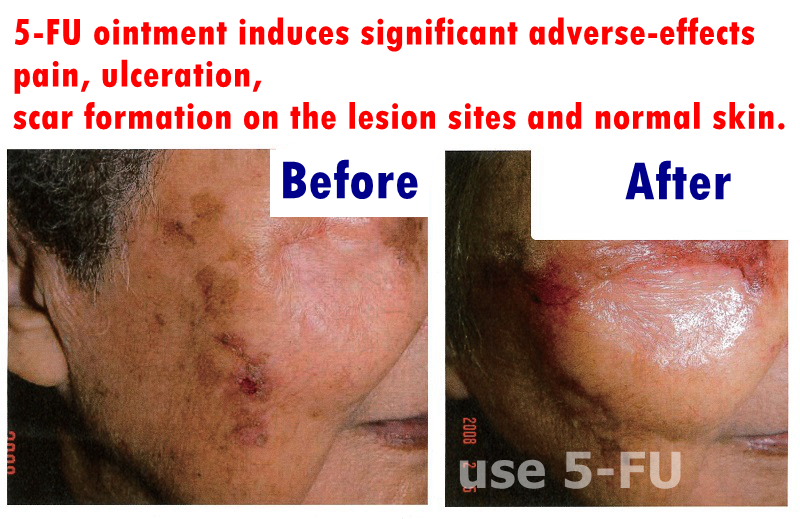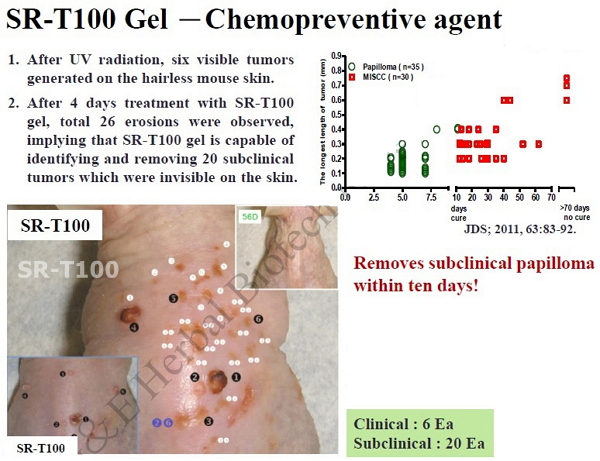
The best treatment for squamous cell carcinoma ( squamous cell cancer / SCC ) in 2021
【Squamous Cell Carcinoma Overview / Causes 】
What is Squamous Cell Carcinoma ?
【Squamous Cell Carcinoma Range / Symptoms / Types】
How dangerous is Squamous Cell Carcinoma ?
【Squamous Cell Carcinoma Prevention/ Treatment】
【The best treatment for squamous cell carcinoma (squamous cell cancer /SCC) 】
The best treatment for squamous cell carcinoma (squamous cell cancer / SCC) in 2021
【Squamous Cell Carcinoma Overview / Causes 】
What is Squamous Cell Carcinoma ?
1. Squamous cell carcinoma, also known as squamous cell cancer, SCC.
2. Squamous cell carcinoma is the second most common form of skin cancer.
3. Most squamous cell carcinomas of the skin result from prolonged exposure to ultraviolet (UV) radiation
4. Some squamous cell carcinoma develops from a precancer called actinic keratosis, or solar keratosis.
5. SCC occurs when DNA damage from exposure to ultraviolet radiation trigger abnormal changes (mutations) in the squamous cells.
6. SCC is caused by changes (mutations) in the DNA of these cells, which cause them to multiply uncontrollably.
【Squamous Cell Carcinoma Range / Symptoms / Types】
How dangerous is Squamous Cell Carcinoma ?
1. Squamous cell carcinoma (SCC) is a fairly slow-growing skin cancer.
2. Squamous cell carcinoma of the skin is usually not life-threatening
3. Unlike other types of skin cancer, it can spread to the tissues, bones, and nearby lymph nodes, where it may become hard to treat.
4. While the majority of SCCs can be easily and successfully treated, if allowed to grow, these lesions can become disfiguring, dangerous and even deadly.
How widespread is SCC?
Ranges, Types ,Signs and symptoms of Squamous Cell Carcinoma of the skin include:
1. Squamous cell carcinoma is usually found on areas of the body damaged by UV rays from the sun or tanning beds.
2. Sun-exposed skin includes the head, neck, chest, upper back, ears, lips, arms, legs, and hands.
3. It’s usually begins as a dome-shaped bump or a red, scaly patch of skin.
4. A firm, red nodule
5. A flat sore with a scaly crust
6. It’s usually rough and crusty, and can bleed easily when scraped.
7. A new sore or raised area on an old scar or ulcer
8. A rough, scaly patch on your lip that may evolve to an open sore
9. A red sore or rough patch inside your mouth
10. Large growths may itch or hurt.
11. It may also pop through scars or chronic skin sores
12. A red, raised patch or wart like sore on or in the anus or on your genitals
13. Your immune system is weakened or suppressed
14. If you’ve had SCC, you have a high chance of recurrence.
【Squamous Cell Carcinoma Prevention/ Treatment】
How to Protect Yourself
A. Prevention
A.1 Limiting extent of sun exposure
A.2 Avoid sun exposure during peak hours when UV light is most powerful.
A.3 And avoid staying in the sun so long that you get a sunburn or a suntan.
A.4 Using sun protection
A.5 Wearing sun protective clothing such as hats, sunglasses, long-sleeved shirts, long skirts, or trousers
B.Treatment
B.1 There are a variety of treatment options for Squamous Cell Carcinoma depending on the patient and the clinical characteristics of the lesion.
B.2 Most squamous cell carcinomas (SCCs) of the skin can be cured when found and treated early.
B.3 Most squamous cell carcinomas of the skin can be completely removed with relatively minor surgery or occasionally with a medicine applied to the skin.
B.4 The best Treatments for you depends on the size, location and aggressiveness of the tumor.
B.5 Ask your dermatologist to clearly explain the options that might work best for you, including details about the risks and benefits.
B.6 Options include : Excisional surgery, Mohs surgery, Cryosurgery, Curettage and electrodesiccation (electrosurgery), Laser surgery, Radiation, Photodynamic therapy (PDT), Topical medications, Chemotherapy,...
Treatments for very small skin cancer: If your skin cancer is very small and has a low risk of spreading, you might consider less invasive treatments, Options are including:
Topical medications,
Curettage and electrodessication (C and E),
Laser therapy,
Freezing / Cryosurgery /Cryotherapy,
Photodynamic therapy (PDT).
Treatments for larger skin cancers: More invasive treatments might be recommended for larger squamous cell carcinomas and those that extend deeper into the skin. Options might include:
Excision surgery.
Mohs surgery.
Radiation therapy.
Chemotherapy.
Targeted drug therapy.
Immunotherapy.
Treatments for skin cancer that spreads beyond the skin : When squamous cell carcinoma spreads to other parts of the body, drug treatments might be recommended, including:
Chemotherapy.
Targeted drug therapy.
Immunotherapy.
Topical medications
1. Solamargine(SR-T100), 5-fluorouracil (5-FU), imiquimod and ingenol mebutate are creams or gels
2. Topical medications can be applied directly to affected areas of the skin to treat superficial SCCs with minimal risk of scarring.
3.Imiquimod activates the immune system to attack cancerous cells, while 5-FU and ingenol mebutate are topical therapies that target cancerous and precancerous cells.
4. When put directly on the skin, topical medications kills tumor cells on or near the skin’s surface, but it can’t reach cancer cells deeper in the skin or those that have spread to other organs.
5. For this reason,topical medications is generally used only for pre-cancerous conditions such as actinic keratosis and for some very superficial skin cancers.
6. They are sometimes used for superficial tumors. The medications are also used preventatively for AKs.
7. Solamargine(SR-T100) is new therapies that target cancerous and precancerous cells.

Fluorouracil (5-FU) :
1. It is typically applied to the skin once or twice a day for several weeks.
2. Your skin may become irritated and red during treatment with 5-FU.
3. With brand names such as Efudex, Carac, and Fluoroplex
Imiquimod (Zyclara):
1. It causes the immune system to react to skin lesions, destroy skin lesions, and may be used to treat actinic keratosis.
2. Because topical chemotherapy does not kill cells under the surface of the skin, close follow-up is essential.
3. It can cause severe skin reactions in some people.
Ingenol mebutate (Picato):
1. Ingenol mebutate is a gel used to treat actinic keratosis .
2. The gel is applied to the skin 2 or 3 daily for several weeks
3. The gel can cause bothersome skin reactions.

Solamargine : 【The best treatment for squamous cell carcinoma (squamous cell cancer /SCC) 】
Curettage and electrodessication (C and E).
1. C and E treatment involves removing the surface of the skin cancer with a scraping instrument (curet), then searing the base of the cancer with an electric needle.
2. This treatment is often used in treating small (less than 1 cm across), thin squamous cell cancers, but it’s not recommended for larger tumors.
3. The procedure may be repeated a few times during the same session until no cancer cells remain.
Laser therapy.
1. Most lasers vaporize (ablate) the skin cancer, while others (non-ablative lasers) convert the beam of light to heat, which destroys the tumor.
2. An intense beam of light vaporizes (ablate) the skin cancer, usually with little damage to surrounding tissue and with a reduced risk of bleeding, swelling and scarring.
3. Laser treatment may be an option for very superficial skin lesions.
Freezing / Cryosurgery / Cryotherapy.
1. This treatment involves freezing cancer cells with liquid nitrogen (cryosurgery).
2. It may be an option for treating superficial skin lesions.
3. Freezing might be done after using a scraping instrument (curet) to remove the surface of the skin cancer.
4. The dermatologist uses a cotton-tipped applicator or spray device to apply liquid nitrogen to freeze and destroy the tumor, which eventually falls off, allowing healthy skin to emerge.
5. Cryotherapy (cryosurgery) is used for some early squamous cell cancers, especially in people who can’t have surgery.
6. Cryotherapy (cryosurgery) is not recommended for larger invasive tumors or those on certain parts of the nose, ears, eyelids, scalp, or legs.
Photodynamic therapy. (PDT)
1. Photodynamic therapy combines photosensitizing drugs and light to treat superficial skin cancers.
2. The physician applies a light-sensitizing topical agent, a liquid drug that makes the cancer cells sensitive to light is applied to the skin.
3. After allowing a period of time for absorption, directs a strong blue or red light or laser at the tumor to activate the topical agent, killing cancer cells while sparing healthy tissue.
4. After the procedure, patients must strictly avoid sunlight for at least 48 hours, as ultraviolet exposure will increase activation of the medication, it can make a person’s skin very sensitive to sunlight for some time and precautions may be needed to avoid severe sunburns.
5. PDT can cause redness and swelling on the skin where it is used.
6. PDT can be used for some superficial SCCs on the face and scalp.
7. PDT is not recommended for invasive SCCs.
8. PDT is most effective for treating actinic keratoses, which can be precursor lesions to SCC.
Excision surgery.
1. Doctor cuts out the cancerous tissue and a surrounding margin of healthy skin.
2. For small SCCs that have not spread, excisional surgery is frequently the only treatment required.
3. For advanced SCCs, the physician will most likely recommend additional treatments (skin reconstruction) following removal of the tumor.
Mohs surgery.
1. Doctor removes the cancer layer by layer, examining each layer under the microscope until no abnormal cells remain.
2. This allows the surgeon to be certain the entire growth is removed and avoid taking an excessive amount of surrounding healthy skin.
3. Mohs surgery has the highest cure rate of all therapies for squamous cell carcinomas.
4. Mohs surgery is the most effective technique to remove SCC, which can save a lot of healthy tissue with minimal scars
5. Mohs surgery is complicated and time-consuming, but it ensures that the entire tumor is removed.
6. Mohs is also used for SCCs that have recurred, and for tumors that are large or growing rapidly, as well as ones with indistinct edges.
Radiation therapy.
1. Radiation therapy uses high-energy beams, such as X-rays and protons, to kill cancer cells.
2. Radiation therapy is sometimes used after surgery when there is an increased risk that the cancer will return.
3. It might also be an option for people who can't undergo surgery.
Chemotherapy.
1. Chemotherapy uses powerful drugs to kill cancer cells.
2. If squamous cell carcinoma spreads to the lymph nodes or other parts of the body, chemotherapy used alone or in combination with other treatments, such as targeted drug therapy and radiation therapy.
Targeted drug therapy.
1. Targeted drug treatments focus on specific weaknesses present within cancer cells.
2. By blocking these weaknesses, targeted drug treatments can cause cancer cells to die.
3. Targeted drug therapy is usually combined with chemotherapy.
Immunotherapy.
1. Immunotherapy is a drug treatment that helps your immune system to fight cancer.
2. When the cancer is advanced and other treatments aren't an option.
【The best treatment for squamous cell carcinoma (squamous cell cancer /SCC)】
Results :

1. Experiments showed that all papillomas(35/35) and 27 of 30 UVB-induced microinvasive SCCs in hairless mice disappeared within 10 weeks after once-daily application of topical SR-T100.
2. Furthermore, 13 patients, who suffered from 14 AKs, were treated with once-daily topical SR-T100 gel and 10 AKs cured after 16 weeks.



Solamargine effectively induces apoptotic cell death in various cancer cell lines, mainly by activating TNFRs.
SR-T100, which is extracted from Solanum incanum, contains alkaloid solamargine as the main active ingredient and has been show to induce cutaneous squamous cell carcinoma cell apoptosis and to inhibit tumor growth in vivo

Characters:
• Prevention of UV skin damages
• Softening of skin keratinocytes
• Restores skin elastic property
• Botanically derived natural plant extraction
• No adverse skin reaction
• Patent rights protection in 32nations
• HiPreservative & Pigment free
USE: Apply several times per day, preferably covers with dermal dressing on film for the best absorption
USAGE : Patented ingredients for enhancing the repair of skin damage from environment and sunlight (as indicated in patents)

Instructions:
1.The cut artificial skin is large enough to completely cover the affected area.
2.Take an appropriate amount of ointment and apply it to the lesion.
3.Cover the cut artificial skin on the lesion.
TURBO Instructions:
In order to shorten the time course, the lesion can be treated with liquid nitrogen first, and then applied with ointment and then put a few artificial skins on the affected area.
If the artificial skin does not fall off, replace the ointment every two days.
(Refill at any time depending on the situation)
The best treatment for actinic keratosis (Solar Keratoses / Actinic keratoses / AKs)
The best treatments for warts (vulvar condyloma acuminatum, Genital warts)
The best treatment for squamous cell carcinoma (squamous cell cancer / SCC )



